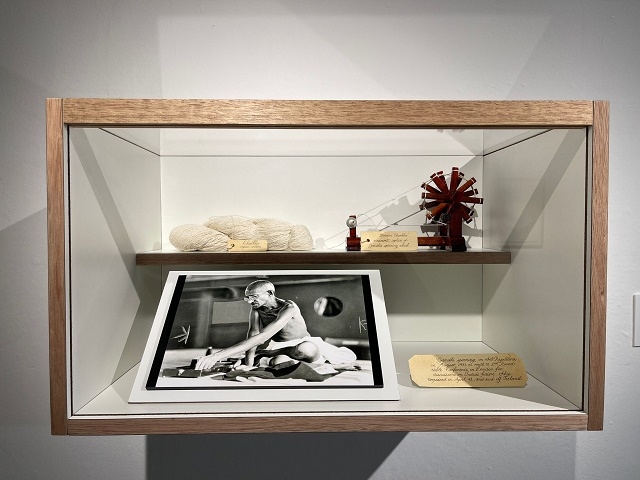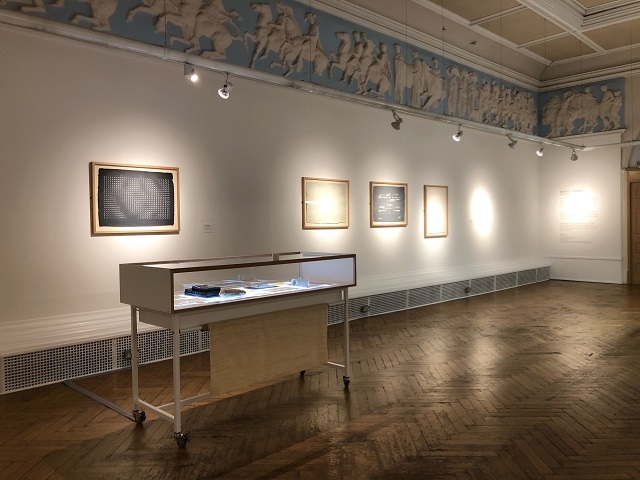Cotton Famine Road features in new art exhibition
Date published: 26 October 2021

Rooley Moor Road, widely known as the ‘Cotton Famine Road'
Rochdale’s famous Cotton Famine Road is featuring in a new exhibition throughout Autumn at Blackburn Museum and Art Gallery.
The historic Victorian stone ‘Cotton Famine Road’ – officially known today as Rooley Moor Road – is a reminder of the Rochdale cotton mill workers who supported the struggle against slavery during the American Civil War of 1861-1865.
Lancashire workers sided with the African slaves who picked cotton in the US to support President Abraham Lincoln’s pledge to abolish slavery. This was despite a blockade of Confederate ports causing a shortage of cotton supplies coming to Rochdale that caused the ‘cotton famine’ which starved thousands of men and women of their livelihoods.
At the time, Lancashire was the leading producer of finished cotton goods in the world, with Rochdale itself having numerous cotton factories providing the beating heart of a thriving local economy.
The theme of this year’s British Textile Biennial exhibition is ‘the politics of cloth’ within which artist Dr Bharti Parmar has focused on cotton – and no showcase would be complete without including Rochdale’s local landmark.
The Rooley Moor Neighbourhood Forum has helped to support the exhibition by helping artist Bharti, who wanted to know more about the Cotton Famine Road.

© Bharti Parmar
Bharti's exhibition, called ‘Khadi’, comprises archival images of Mahatma Gandhi’s sympathetic visit to Darwen 90 years ago (invited to see the effect India’s fight for independence and resultant boycott of British goods was having on the East Lancashire textile industry), artefacts from Blackburn Museum and Art Gallery and delicate drawings and sculptures made from Khadi paper, a thick cotton watercolour paper made by hand from recycled cotton t-shirts in India.
The work stems from Bharti’s life-long interest in textile history and her personal narrative as the daughter of an Indian immigrant textile mill worker in Yorkshire. The work takes the textile archive of Blackburn Museum and Art Gallery as its focus and explores how cotton, and specifically Khadi, reveals themes of global connections, fast fashion, labour and colonialism, including Indian independence from British rule.

© Bharti Parmar
As part of her solo exhibition, Bharti has included an element of the Cotton Famine Road in a film collaboration with award-winning Blackburn-born film maker, Sima Gonsai.
The film is punctuated by scenes of the Cotton Famine Road in which Alan Rawsterne, secretary of the Rooley Moor Neighbourhood Forum, outlines why and how the road was built and its link with labour, struggle and freedom.
The film will also be shared with the Rooley Moor Neighbourhood Forum.

outlines why and how the road was built and its link with labour, struggle and freedom
© Huckleberry Films
Mr Rawsterne said: “It was an honour to be asked to help. It's interesting to try and draw a comparison between the situation in India at that time and the Cotton Famine.
“It's noticeable how well Gandhi was received by the cotton workers in Darwen; I suspect there would have been some people alive at the time of Gandhi's visit who remembered the Cotton Famine or had close family that had been affected by it.”
The exhibition also comprises bespoke cabinets which contains items from Blackburn Museum’s textiles archive and Gandhi ephemera, annotated with specially commissioned museum-style calligraphy labels.
The exhibit runs until 18 December at Blackburn Museum and Art Gallery.
Bharti Parmar's work can also be viewed on www.bhartiparmar.com.
© Huckleberry Films
Do you have a story for us?
Let us know by emailing news@rochdaleonline.co.uk
All contact will be treated in confidence.
Most Viewed News Stories
- 1Historic England ‘disappointed’ by the spat over Hopwood Hall
- 2Consequences of impending landline switch off revealed in new survey
- 3Schools in Rochdale borough to become vape free settings
- 4Sports club music festival to go ahead despite neighbours’ fears
- 5Police officer from Rochdale sentenced for sexually assaulting colleagues
To contact the Rochdale Online news desk, email news@rochdaleonline.co.uk or visit our news submission page.
To get the latest news on your desktop or mobile, follow Rochdale Online on Twitter and Facebook.

